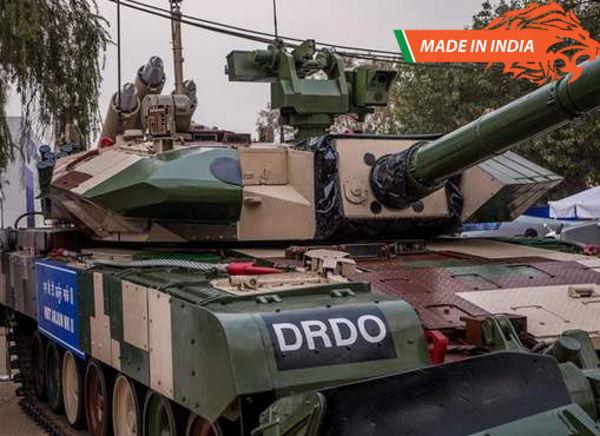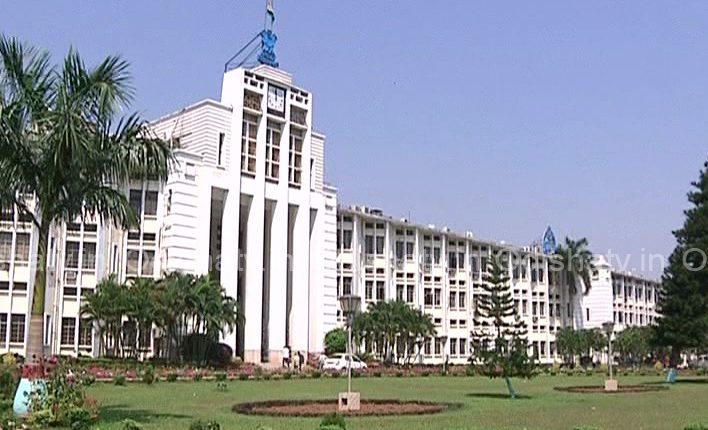“In China, probably 10-13% people are engaged in agriculture and only about 4% in US. We must bring it down to 25-30% in India to make this an efficient process. If that has to happen, we have to go down to rural India and develop skills and they need not migrate to the cities. We can automate various phases of the agriculture and organize this sector.” says Ms. Abhipsa Mishra, a passionate Learning & Development professional; having experience in financial and leadership training. A social media enthusiast and blogger, she has authored articles for many journals and news dailies. She has also developed content for corporates and training consultancy majors.
Congratulations! Bhubaneswar is ranked as the no.1 in smart cities list.
We always hanker for big cities, glamorous cities; glitzy titles attached to cities – metropolitan, Tier I, smart and the like. Ever wondered what is really required for our state? Our state which is the 9th largest state by area in the country (155,820 km2) has got almost 70% rural areas. Which means the majority of the population resides in the villages. A small proportion of the population of Odisha resides in Bhubaneswar. Smart city concept is not going to bring any changes in the lives of the rest.
Odisha primarily represents a rural civilization. It comprises of many scales and sizes of villages, and homesteads. In a country cities come and go, but the villages stay. So we have had Indus cities, Pataliputra, Kashi, Saket, Kannauj, Delhi, Vijaynagaram, Paithan and Pune; but the villages have outlived them all. Odisha is blessed to have an ample number of villages to name where the rest of Odias resides. It’s high time we need to urbanize rural India.
So why not try to make these villages rich?
Urbanization of villages:
Sounds interesting; isn’t it? No, I don’t mean getting malls and PVRs to villages. By urbanization, I mean to get things that are available in a city should become available in the villages.
There are two ways, and only two ways in urbanizing our villages:
- Developing our villages – by rural industrialization
- Developing our people – by enhancing their skills
Defining rural industrialization: Developing villages
Over 70% of Odia population lives in villages. If all of them move to town or cities you may anticipate the chaos it will create. The same is happening at quite a good pace now resulting the real estate prices, particularly in Bhubaneswar and Cuttack to scale the limits. It is very important that the city moves into the village.
We generally associate villages with agriculture. It is important we get people out of agricultural activity and get them into other skills, because 70% of the people producing food in this country means if 10 people have to eat 7 people are cooking, which is an inefficient way of managing anything. In next 10-15 years if we do not reduce the number of people involved in farming you will only drive them to suicide. In China, probably 10-13% is in agriculture, in United States it is only about 4%. Even if you don’t go that far at least you must bring it down to 25-30% to make this an efficient process. If that has to happen, we have to go down to rural India and develop skills and they need not migrate to the cities. We can automate various phases of the agriculture and organize this sector.
A Google report states that only 15.4% of Odias are into agriculture. Which means, the rural industrialization in agriculture is not impossible. What needs here is a diligent study on what are the various crops that are being produced and what are the amenities for modern farming required to grow those crops. Developing the agricultural lands will help the small part of the population involved in this profession as well as improve their standard of living.
I will rather not promote the idea of shifting the industrial (factory) base to rural Odisha considering the after–effects on environment and the political chaos. The corporates that set up factories in those remote areas hardly pay attention to the safety and perseverance of the environment in that area coupled with the political interference which benefits neither the companies nor our people. Hence, the other two options left are:
- Non-Farmland utilization for MSMEs: Promote industries which have either a backward or a forward integration or linkage with rural economy such as SMEs and village enterprises.
- Non-Farmland utilization for infra-development:
- Like the new Bhubaneswar – Puri highway, we can think of making a better connect of towns and cities to the villages
- Lands can be used to make educational institutes and welcome top-ranked colleges to increase their number of seats
- Organizing trade fairs not only in Bhubaneswar but also in other parts of the state.
Up-skilling the educated unemployed: Developing our people
A National Skills Development Corporation (NSDC) report states that by 2022 the biggest problem that the society will face is not uneducated-unemployed but educated-unemployed population. ‘Educated-unemployed’ are the category that have taken their basic qualification but don’t get through any job because they lack either of the skills – hard and soft. Unfortunately, the grade system prevailing in educational institutions today lets everyone clear the basic qualification. The pathetic thing is that majority of students score above 80% (even 99.99%!) marks and still don’t make a successful professional entrepreneur. There are many elements for a university topper that collectively compels him to become a real life five-point-someone. In corporate setups it’s not just the IQ that is required, other factors like Emotional Quotient (EQ), Social Quotient (SQ), Values, Beliefs, Attitude, Knowledge, Family, Culture and upbringing, also have its significance.
Hence, it is high time to develop our life skills. Some steps that might be considered here are:
- Improve the infrastructure of existing educational institutes:
- The no. of seats should be increased in good colleges
- The grading system should be re-visited
- Teachers – who are ironically hired at Rs.5000-8000 per month to teach in the mushrooming B-Schools and Engineering colleges – they do not deliver value. The amount they make a month proves their abilities. There should be a strict check on this.
- Life skills need to be built. Colleges and schools need to have a strong framework to build the soft skills and communication of Odia students.
- Set-up vocational training institutes in villages:
- These set ups will give a change to the students to pursue a vocation who are not brilliant in studies. This will also bring opportunities to girls and ladies of the rural areas who are deprived of studies for varied reasons like financial problem, girl-child education and the like.
- Several self-help-groups can be formed by training on vocational skills which may also help in the backward and forward integration of industries.
- Spoken English and usage of computers and internet training institutes in villages:
- Odias are poor in spoken English, having said the elementary education system in Odisha doesn’t support speaking habit in English. Odias majorly are good in grammar but speech is something that needs to be taken care of. Such institutes will help in providing an aid to overcome this problem.
- Internet connects us to the world unseen, unseen but that affects us. In the global economy even a chai wala’scompetitor is a CCD or a Starbucks, whose name he might not have heard ever. In this information era, having access and knowledge of using internet is pertinent to survival.
Off late, I have become a big fan of Indian mythology. All thanks to Mr. Devdutt Pattanaik, the well-known mythologist and the Chief Belief Officer of Future Group. In one of his TED talks he speaks about the promise lands – Swarga, Kailash and Vaikuntha. We are talking about all these because of one single root cause – hunger. Hunger for food, shelter, property, money and what not. Swarga has the Kalpataru, Kamadhenu and Chintamaniratna; which gives you what you ask for (There is infinite return without investmentJ). Indra, the king of heaven, is prosperous but Swarga is always under attack. Indra is always worried and insecure. There is prosperity but no peace. Kailash is a snow-cladded mountain where there is no prey and no predator. Hunger is destroyed there. Hence, Lord Shiva is always at peace. He is a yogi. He is far from the mundane pleasures. Here hunger is outgrown. There is no prosperity but peace. And finally, Vaikunth is where both peace and prosperity prevails. It is like a playground (ranga-bhumi). Here Vishnu descends to participate with people. For Vishnu, others hunger matters first. Inevitably, to most people, their own hunger comes first. But such an attitude would lead to a battleground (rana-bhumi) and ultimately prosperity without peace. The ideal model would therefore be Vaikuntha where someone else’s hunger matters first. This belief can lead to a playground (ranga-bhumi) as opposed to a battleground (rana-bhumi) and finally to prosperity with peace. I visualize Vaikuntha in Odisha where both peace and prosperity prevails. We just need the right attitude and strategy to make things happen.
 Indian Industry Plus A Pratisrutiplus Suppliment
Indian Industry Plus A Pratisrutiplus Suppliment


















